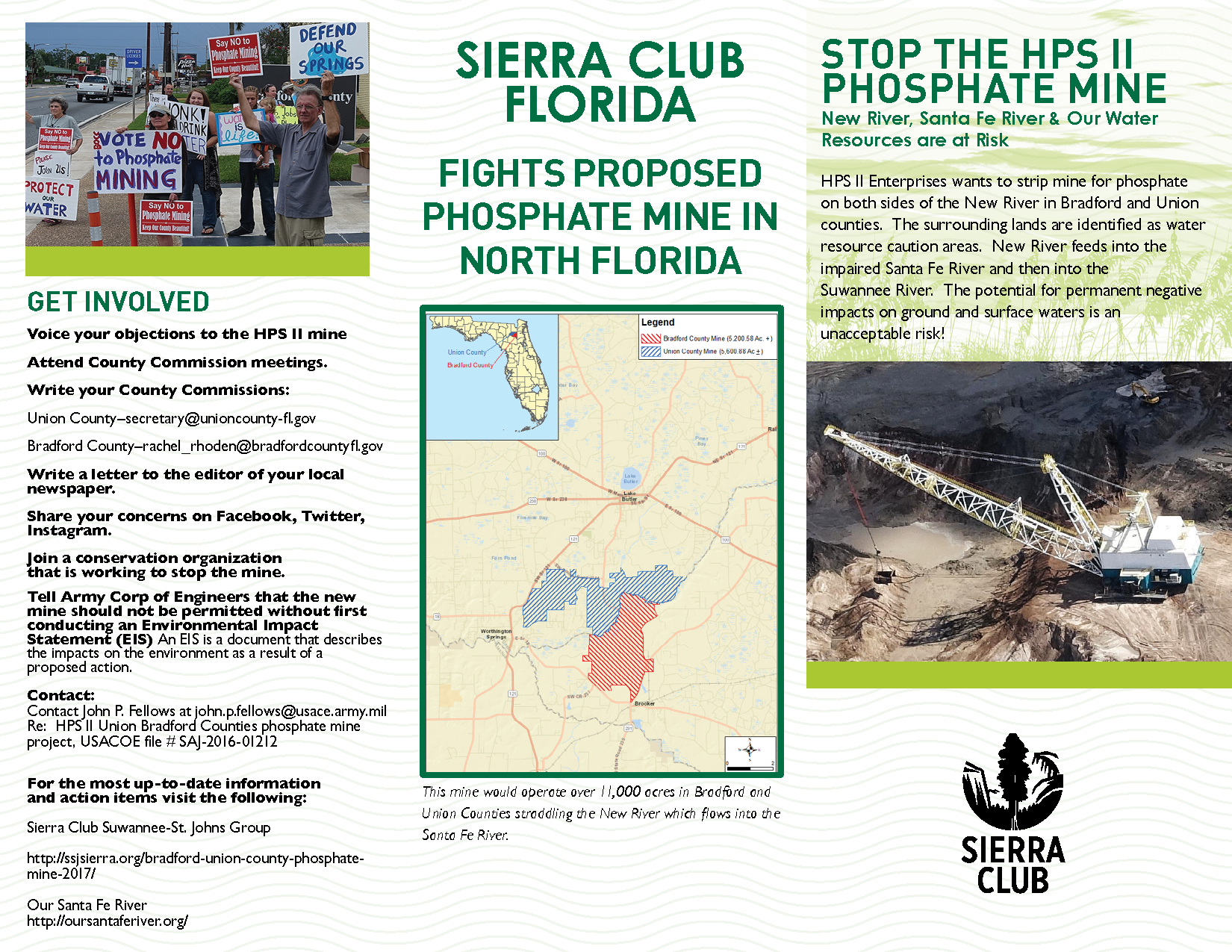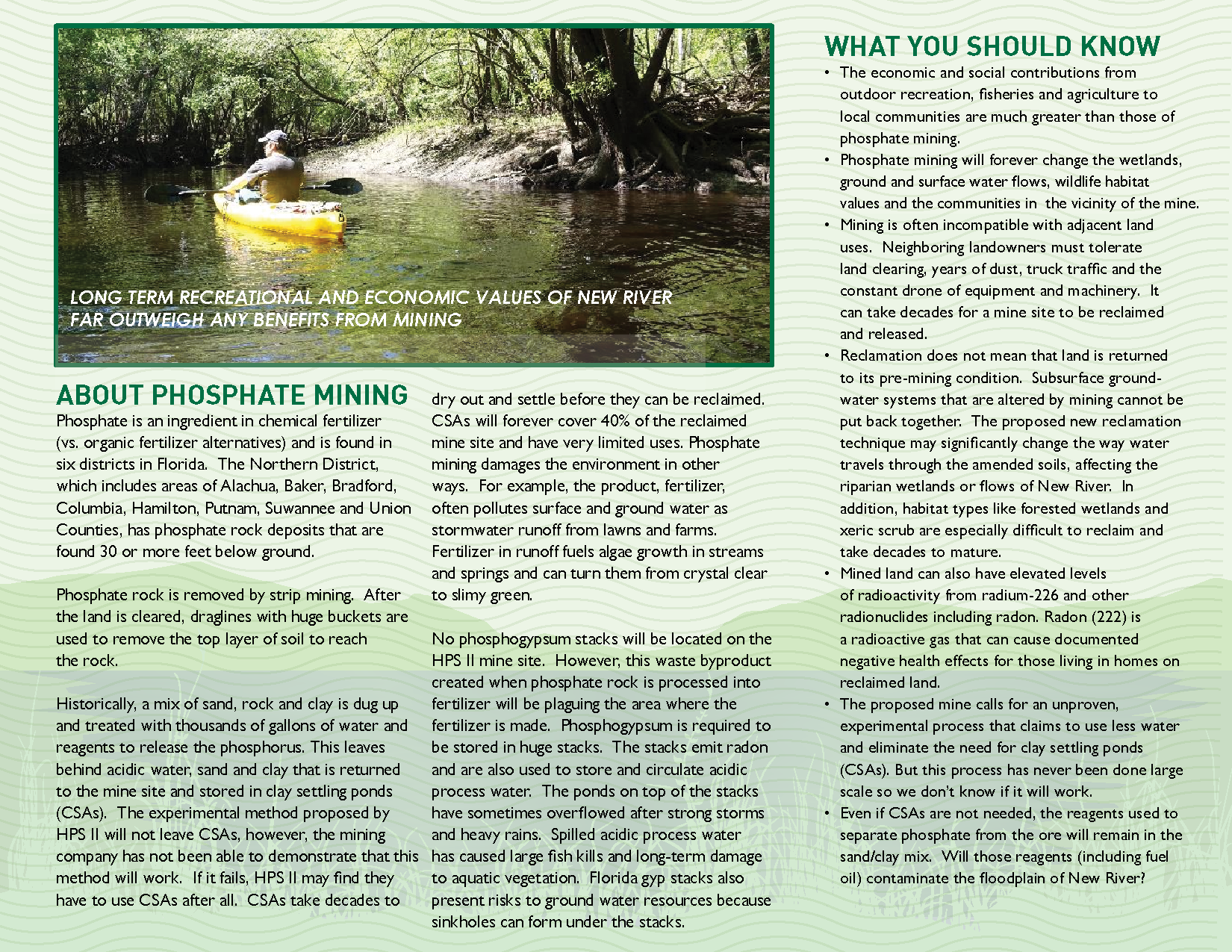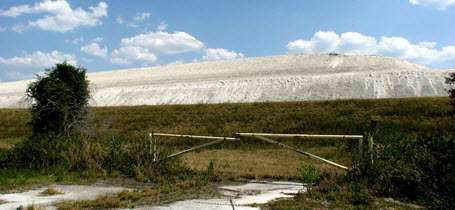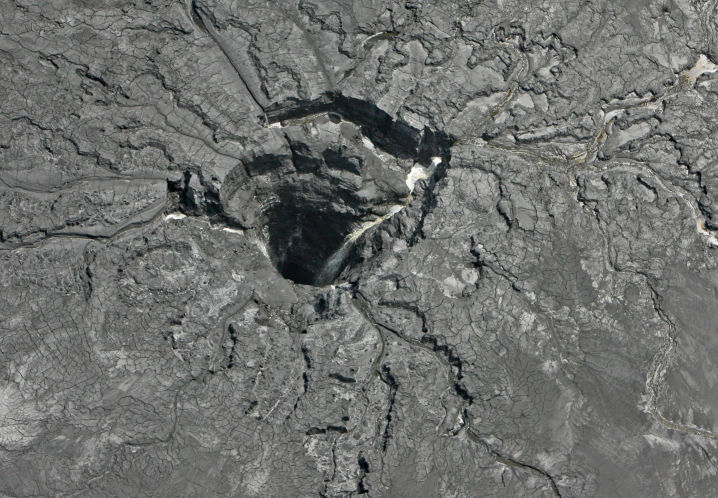Sierra Fights Proposed Phosphate Mine in North Florida
Residents are gearing up for an impending Bradford County Commission vote on whether or not to approve phosphate mining on a 10,000 acre property in Bradford and Union counties. Union County has declared a mining moratorium as it reviews its land use regulations. Alachua County and five cities within Bradford and Union counties have passed resolutions against the mine.
Statement from Alachua Commissioner Hutchinson (July 2019):
"The Alachua County Commission, our staff, and advisors know that this is the most important regional environmental issue of our time. The work we have done – most of it behind the scenes so far – is gearing up for an epic battle with regulatory agencies and local governments. But our [Alachua] County Commission will not allow the Santa Fe River – the sparkling gem that is the best reason to live in North Florida – to be sullied on our watch. " To read more click here
Phosphate mine - Residents speak out
Union county says more workshops needed - Phosphate mine
North Florida Phosphate Brochure (pdf)


(NOVEMBER 10, 2018) This PBS special (7 min.) explains the issues in the fight to stop phosphate mining in North Central Florida Bradford and Union Counties. Sierra Club Florida, members featured throughout, have taken a stand with the community opposing this impending destructive and unneccessary mining.
The DeSoto County Commission votes 5-0 to wipe out its own zoning decision from last year, giving Mosaic another chance in four years.
BY CRAIG PITTMAN
(TAMPA BAY TIMES, MAY 6, 2019) Last summer, phosphate giant Mosaic suffered a crushing defeat when the DeSoto County Commission voted 4-1 to deny its bid to rezone 18,000 acres from agriculture to mining. The vote appeared to thwart a strategy 20 years in the making to shift the company's mining south from its longtime Polk County stronghold.
But the defeat was only temporary. On April 23, in a move one veteran DeSoto politician said she'd never seen before, the County Commission voted to follow a mediator's recommendation and void that rezoning vote, wipe the slate clean and let Mosaic come back and try again in four years. In the meantime, the company and the county will put on a series of public workshops to explain how Mosaic's operations work and answer any questions the commissioners might have after last year's tumultuous two-day public hearing.
Phosphate Mining in Florida
Television ads and billboards portray phosphate strip mining as a wholesome industry that creates jobs and feeds the world. A closer look reveals that phosphate mining is extremely harmful to our wetlands, water quality and quantity, and wildlife habitat. Phosphate mining companies own or have mineral rights to over 400,000 acres, mostly in the Peace and Myakka River watersheds, with mining projects planned for over 62,000 acres. Approximately 340,000 acres have already been mined in Florida yet fewer than 70,000 acres have been reclaimed and released. Moonscapes of un‑reclaimed land are left for years in spoil piles and deep pits, the destruction often hidden from view by tall trees or berms surrounding the mine sites.

As seen in the photo to the right, a gypstack in Fort Meade, FL, photographed by Harvey Henkelman, Phosphogypsum - a hazardous waste byproduct created when phosphate ore is processed into fertilizer - is stored in MOUNTAIN-LIKE structures called gypstacks that can reach 200 feet or more. These radioactive stacks, which re-circulate acidic process water, will be here forever. Florida will have to deal with them long after the mining companies are gone.
There are already 25 gypstacks in Florida. They can sometimes overflow and spill their toxic waste after strong storms or prolonged rain events. In August 2016, a massive sinkhole that opened up underneath a gypsum stack at a Mosaic phosphate fertilizer plant in Mulberry dumped at least 215 millions of gallons of contaminated water into the Floridan Aquifer. The Floridan Aquifer provides drinking water for 60 percent of Florida residents.
What is the Florida Sierra Club Phosphate Committee?
The Florida Sierra Club Phosphate Committee serves as a watchdog in its effort to monitor the activities of mining companies. It works in cooperation with other like-minded organizations to hold mining companies accountable for any accidents or toxic releases which may harm the environment, water bodies, wildlife or residents of Florida. The committee also seeks to work with the companies and permitting agencies in an advisory capacity whenever possible.
An estimated 30 million tons of waste phospho‑gypsum will continue to be produced every year.

Read Tampa Bay Times story on Mosaic sinkhole here
Sinkhole photo from Tampa Bay Times
For information on the Florida Sierra Club Phosphate Committee, contact Beverly Griffiths at bevgriffiths@verizon.net
For more details, take a look at this Phosphate Brochure (in pdf format).
Watch this 4-minute video that shows the real face of phosphate mining